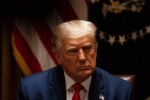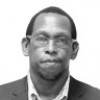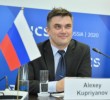Civilians in Congo Suffer as Elites at Home and Abroad Jockey for Profits
During the past few weeks in the eastern Democratic Republic of the Congo, a lengthy conflict has been condensed into a series of violent episodes that will determine the country’s future. On January 27, a rebel movement known as the March 23 Movement, or M23, wrested Goma, a city of 2 million people, from Congolese government control.
In the subsequent days, the M23 and a connected rebel group, the Congo River Alliance (Alliance Fleuve Congo or AFC), solidified their grip on the mineral-rich province of North Kivu and began to push into the sister province of South Kivu, capturing Bukavu, a lake port of 1.3 million, with barely a fight. Congo is one of Africa’s largest countries, and resource-wise it is one of the richest on the continent. The Kivu region is flush with valuable raw materials like gold and coltan (an ore of tantalum that is widely used in consumer electronics), but centuries of extractive colonialism, exploitation and conflict have meant that the area remains one of the poorest parts of the world.
The insurgency has complex roots, but neighboring states like Rwanda and Uganda are deeply implicated. The M23 draws its fighters from members of the Banyamulenge, an ethnic group that Rwanda claims is persecuted by the Congolese army. The AFC draws from a broader base: Its adherents come from different ethnic groups but are united in their opposition to Congo’s president, Félix Antoine Tshisekedi Tshilombo. More than any other party, the Rwandan government seems to be calling the shots: United Nations experts have said Rwanda’s army maintains “de facto control” of the rebels. The rebels have been recorded using sophisticated weaponry, some of it thought to be Israeli, raising questions about whether powerful foreign backers are supporting the Rwandans.
Civilians caught in the middle of this conflict suffer immensely. Women and children are not spared during the vicious fighting. According to Human Rights Watch, an NGO that monitors abuses in conflict zones, the M23 has shelled civilian camps and executed children who donned army uniforms left by fleeing soldiers, and the Congolese army has burned villages and looted civilian zones: All sides have been complicit in abuses.
For its part, the Congolese government has, according to the UN, “continued to systematically rely on” unaccountable militias, including one that finds its roots in the Rwandan genocide, destabilizing a planned peace process. That group, the Democratic Forces for the Liberation of Rwanda, or FDLR, is the descendant of the Hutu militiamen who fled Rwanda after instigating the 1994 genocide against the Tutsi ethnic group. Though their numbers have diminished from their peak in the early 2000s to some 1,500 fighters today, they have continued to wreak havoc in eastern Congo.
It is not only the FDLR and other militias instigating violence in the Kivus. Although the Congolese government has made some effort to prosecute rape in the army’s ranks, civilians on the ground told Truthout over the phone during the recent conflict that they feel unsafe with armed men of any stripe. Tensions between the central government, which draws from the Luba-Kasaï ethnicity, and Swahili-speaking populations are at an all-time high.
“Socially speaking, there has been a tear in the fabric of Congolese society,” one Goma resident, who requested anonymity because he was speaking from rebel-held territory, told Truthout. “In the capital, Kinshasa, they are blaming the people of the east for this........






















 Toi Staff
Toi Staff Tarik Cyril Amar
Tarik Cyril Amar Andrew Mitrovica
Andrew Mitrovica Sharona Margolin Halickman
Sharona Margolin Halickman Rachel Marsden
Rachel Marsden Patrick Gathara
Patrick Gathara Belen Fernandez
Belen Fernandez Gideon Levy
Gideon Levy Alexey Kupriyanov
Alexey Kupriyanov
